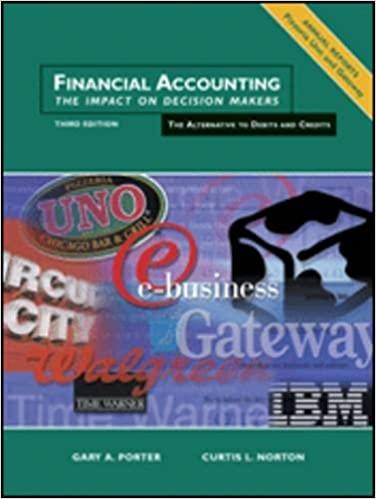1. (14 points total) Assume there is a 100-person county in coastal Massachusetts made up of two geographic areas, an island and a mainland connected to the rest of the state. There are currently 25 residents of the island, all of whom own palatial beachside homes that have a value of $1,700. However, these island folks face a chronic risk of having their homes destroyed due to flooding during hurricane season. Should a hurricane occur, they will each lose 75% of the value of their home. There is a 40% chance that hurricane-induced flooding will occur. The 75 mainland residents, who have homes worth $1,200, have invested in sea walls and other barriers to prevent the types of flooding events that occur on the island. As a result, they face no personal economic damage due to flooding. 1.1. (3 points) Suppose that both the island and mainland residents have a utility function over wealth of U(w) = (1/6), Given the actual flooding risk, what is the total expected social welfare (utility) of the county? 1.2. (3 points) The county commissioner has just announced that, based on the results of a consulting study, all residents of the county (both island and mainland) must buy actuarially fair insurance against flood risk. The consultants only surveyed island residents to come up with their estimate of the probability of flooding and the per-home economic loss a flood would cause. If everyone in the county were forced to buy this type of insurance, show that it would increase the social welfare of the island residents and decrease the social welfare of the mainland residents. 1.3. (3 points) Show how a scheme that would spread the risk of flooding equally among all residents is preferable from a total social welfare standpoint compared to the baseline in (1.1) and insurance program in (1.2). 1.4. (2 points) Suppose your risk-spreading scheme were actually implemented. As a result, 40 of the current mainland residents (who all face identical flooding risks) decide to up and move to the island. Is this best described as an example of moral hazard or adverse selection? Explain. 1.5. (3 points) After the residents move, is the risk-spreading scheme you developed in (1.3) still desirable from a social welfare standpoint? 1. (14 points total) Assume there is a 100-person county in coastal Massachusetts made up of two geographic areas, an island and a mainland connected to the rest of the state. There are currently 25 residents of the island, all of whom own palatial beachside homes that have a value of $1,700. However, these island folks face a chronic risk of having their homes destroyed due to flooding during hurricane season. Should a hurricane occur, they will each lose 75% of the value of their home. There is a 40% chance that hurricane-induced flooding will occur. The 75 mainland residents, who have homes worth $1,200, have invested in sea walls and other barriers to prevent the types of flooding events that occur on the island. As a result, they face no personal economic damage due to flooding. 1.1. (3 points) Suppose that both the island and mainland residents have a utility function over wealth of U(w) = (1/6), Given the actual flooding risk, what is the total expected social welfare (utility) of the county? 1.2. (3 points) The county commissioner has just announced that, based on the results of a consulting study, all residents of the county (both island and mainland) must buy actuarially fair insurance against flood risk. The consultants only surveyed island residents to come up with their estimate of the probability of flooding and the per-home economic loss a flood would cause. If everyone in the county were forced to buy this type of insurance, show that it would increase the social welfare of the island residents and decrease the social welfare of the mainland residents. 1.3. (3 points) Show how a scheme that would spread the risk of flooding equally among all residents is preferable from a total social welfare standpoint compared to the baseline in (1.1) and insurance program in (1.2). 1.4. (2 points) Suppose your risk-spreading scheme were actually implemented. As a result, 40 of the current mainland residents (who all face identical flooding risks) decide to up and move to the island. Is this best described as an example of moral hazard or adverse selection? Explain. 1.5. (3 points) After the residents move, is the risk-spreading scheme you developed in (1.3) still desirable from a social welfare standpoint







